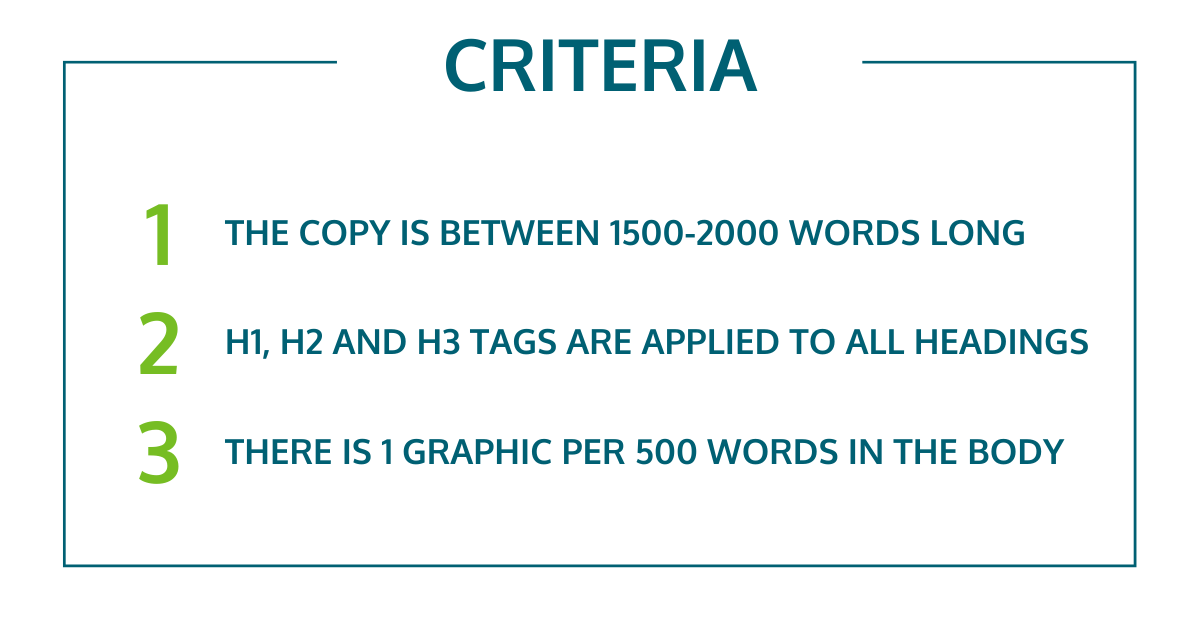-
- marketing agility
- Teams
- Organizations
- Education
- enterprise
- Articles
- Individuals
- Transformation
- Solution
- Leadership
- Getting Started
- business agility
- agile management
- going agile
- Frameworks
- agile mindset
- Agile Marketing Tools
- agile marketing journey
- Agile Marketers
- organizational alignment
- People
- Selection
- (Featured Posts)
- agile journey
- Metrics and Data
- Kanban
- strategy
- Resources
- Why Agile Marketing
- agile project management
- self-managing team
- Meetings
- agile adoption
- scaled agile marketing
- tactics
- Scrum
- scaled agile
- agile marketing training
- agile takeaways
- Agile Meetings
- agile coach
- Agile Leadership
- Scrumban
- enterprise marketing agility
- state of agile marketing
- team empowerment
- agile marketing mindset
- agile marketing planning
- agile plan
- AI
- Individual
- Intermediate
- Team
- Videos
- kanban board
- Agile Marketing Terms
- agile marketing
- agile transformation
- traditional marketing
- FAQ
- agile teams
- Agile Marketing Glossary
- CoE
- agile
- agile marketer
- agile marketing case study
- agile marketing coaching
- agile marketing leaders
- agile marketing methodologies
- agile marketing metrics
- agile pilot
- agile sales
- agile team
- agile work breakdown
- cycle time
- employee satisfaction
- marketing value stream
- marketing-analytics
- remote teams
- sprints
- throughput
- work breakdown structure
- News
- Scrumban
- agile brand
- agile marketing books
- agile marketing pilot
- agile marketing transformation
- agile review process
- agile team charter
- cost of delay
- hybrid framework
- pdca
- remote working
- scrum master
- stable agile teams
- startups
- team charter
- team morale
- user story
- value stream mapping
- visual workflow
Definition of Done vs Acceptance Criteria (and Why Your Team Needs Both)

Have you ever had to move a card out of the “done” column because it turns out it wasn’t actually finished? Or have you checked something off your to-do list and finished up your day only to later learn the work wasn’t completed?
Whether you're part of an Agile team or a traditional one, you absolutely need the ability to determine when a piece of work is actually done.
In other words, when is it ready to be released into the wild and create value for your customers? Answering that question is a critical step towards better prioritization, less unplanned work, and ultimately creating a truly effective Agile marketing team.
Starting with Two Questions
For marketing teams in particular, the answer to this crucial question typically comes in two parts.
First, there's agreement on when the team has created a viable piece of marketing collateral. When we achieve this alignment, we can prevent over-processing, a type of waste that's generated when we spend too much time on simple assignments.
Then there's clarity about when something is shippable, either to the end customer or to a different team. This half of the equation creates much-needed consistency in the marketing process and delivers higher-quality campaigns.
With both of these halves in place, “done” shouldn’t be a matter of perspective. But when one or both halves of that equation are off, teams can end up fruitlessly spinning.
Operating without a clear definition of done is especially harmful to Agile teams that work in short time-boxed iterations and commit to specific deliverables for each one. Every return of a marketing asset for additional processing risks delaying its delivery and disrupting the whole workflow.
.png?width=1200&name=Definition%20of%20Done%20VS%20Acceptance%20Criteria%20(1).png)
In an Agile environment, teams use two complementary tools to define what finished work looks like (definition of done) and create a checklist for each item that passes through the process (acceptance criteria).
Using both together creates a consistent flow of work through the Agile marketing team, and gives the team confidence that their work will be acceptable to stakeholders or other teams. Here are some tips on bringing both of these powerful tools together to strengthen your team's process even further.
The Definition of Done in Agile Marketing
The definition of done in Agile is a set of conditions that the team must meet before a marketing campaign, program, user story or, on a more granular level, task can be considered complete.
Establishing a definition of done and achieving mutual understanding of it across the whole team is crucial for ensuring that we're consistently delivering high-value, impactful marketing work.
Having a clear definition of done reduces the need for rework, most Agile teams’ worst nightmare.
A consistently applied definition of done becomes a kind of gate that separates work items from being "in progress" to being considered "done."
Unfortunately, definitions of done are not one size fits all; each team has to develop their own.
That said, here's an example checklist for content-centric marketing work:
- All deliverables follow brand guidelines
- All deliverables were proof-read
- All deliverables were spell-checked
- All deliverables were peer-reviewed
- All acceptance criteria were met
When creating a definition of done, try to add universal items that are applicable to any type of marketing deliverable.
.png?width=1200&name=Definition%20of%20Done%20VS%20Acceptance%20Criteria%20(2).png)
Once we have a general definition of done in place, we can start thinking about acceptance criteria. These drill down into aspects of the definition of done that are more specific to individual work items.
Acceptance Criteria in Agile Marketing
Acceptance criteria are definitions of done on a smaller, more specific scale.
Much like their more general cousin, the definition of done, acceptance criteria come in the form of a checklist that needs to be completed before labeling a deliverable as done. However, the acceptance criteria are unique for every work item or user story that passes through the marketing workflow.
They typically cover specific use cases and parameters that the team must meet to ensure the quality of a piece of marketing work. The goal of defining acceptance criteria is to clarify specifically what we expect the team to deliver for each granular work item, like a task or user story.
For example, a list of acceptance criteria for a blog article might feature the following requirements:
- The copy is between 1500-2000 words long
- The copy is optimized to rank for the keyword “X”
- Each subheading is no longer than 300 words
- There is one graphic per 500 words in the body of the article
- The conclusion ends with a call to action redirecting readers to product page “Y”

When we meet the acceptance criteria for the article, we proceed to check each of the remaining items that comprise our definition of done. Then, if we’ve met the specific and general criteria, this work item can move to completion.
Applying Definitions of Done and Acceptance Criteria Together
Both definition of done and acceptance criteria support a healthy team process in different ways. They approach the problems that a lack of clarity creates from two different angles.
Definitions of done ensure we're creating value based on customer expectations (brand consistency, no spelling mistakes, etc.), while acceptance criteria guarantee that we're able to consistently produce high-quality work.
In combination, these explicit policies improve the team’s efficiency and the quality of their deliverables. They create a system of steps that the team follows every time they begin and finish new work.
Defining Completion For Your Team's Work
Follow these three simple steps to prepare a definition of done and acceptance criteria for your marketing process.
Step 1: As a team, define DONE on a process and task level
Although it may seem like a huge time investment to involve the team in defining what makes a marketing deliverable done, the return is well worth it. Without input from the marketing team, it’s nearly impossible to create a definition that can be applied to all of the different types of work passing through the process.
Even worse, without input from the group, the definition of done may face internal resistance as it does not reflect the opinions of those closest to the work.
It's imperative for the definition of done to be available to everyone, and the reasoning behind each requirement to be transparent. This way, it becomes clear why work might be held up and what needs to be done to move it forward.
Step 2: Keep it simple
Drafting a long list of requirements is not the most effective way to ensure consistency and quality in the marketing process through acceptance criteria and definition of done. Try to keep the definitions as succinct as possible, so that even a new team member can easily follow the requirements and understand their intention.
Stick to the golden rule: the definition of done must cover the minimum work required to meet our expected quality level.
Since the definition we create is not set in stone, we can always come back to revise and update it if need be. In fact, evolving it over time to reflect the team’s current reality is recommended.
Step 3: Visualize the criteria for finished work
Finalize the definition of done and acceptance criteria by making them visible to everyone on the team.
Once there's agreement on the conditions that it includes, our goal should be to apply it consistently to every task, campaign, or marketing program that passes through the process.
There are several visualization methods you can apply:
- Putting the definition of done on display as a separate process phase visualized through columns on your team’s Kanban boards
- Visualizing the conditions as a checklist on every ticket we create on the boards
- Listing them under the Done column of your boards
When we have the definition of done visible all the time, the team is going to be continuously reminded of the steps they need to follow to ensure stellar delivery of marketing value. This will reduce the chance of skipping a condition or two when they're in a rush.
The greatest benefit of visualizing the definition of done and the acceptance criteria for each item is standardizing best practices and creating clarity on a process scale as well as task scale.
Are You Done?
Now that you’re equipped with everything you need to get a definition of done and acceptance criteria set on your team, what's next? Fortunately, there are tons of other ways you can improve your Agile marketing team’s performance.
Our online learning platform The Ropes is full of courses designed to empower Agile marketers to improve their abilities to deliver more value than ever. Check it out and see how you can take your marketing to the next level. Or, you can accelerate your Agile journey even more with Agile marketing coaching. The choice is yours!
Topics discussed
Improve your Marketing Ops every week
Subscribe to our blog to get insights sent directly to your inbox.


